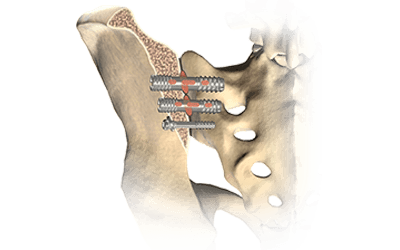Yet Another Example On How To Easily Fail The DABNM Oral Test
This is the third and last of my negatively phrased post on why you (might have) failed the DABNM oral test (you can find the first two post on how not to fail the DABNM exam here and here). Not because there isn’t more advice to give, but because three just seems like a good enough number. I’m still working on my CNIM exam study guide, and will eventually get to the DABNM material. I promise. Eventually.
Anyways… after talking to some people about how they prepared for the DABNM orals, I realized that they weren’t heading in the right direction (or at least what I thought was the right direction).
They prepared like they were taking part 2 or something of the written DABNM exam. The written exam is all about questions testing your general knowledge, and you giving those knee-jerk answers. Just like preparing for national boards.
Question >>>>> Knee jerk reflex >>>>>> Answer
– What modality is affected by sevoflurane>>>>> visual evoked potentials.
– What nerve innervates the deltoid>>>>>> Axillary
– What neuromonitoring modality would you use for parasagittal meningioma>>>>> lower extremity somatosensory evoked potentials.
That’s a completely different test and requires completely different preparation. If you think that’s how the oral exam is going to go, you need a new crystal ball. Your future probably holds about a couple grand wasted in test fees, travel and time off work.
For that type of testing, you should be more concerned with breadth (you need to cover a lot of territory) over depth (you need to drill down on one specific topic). The opposite is true for the DABNM oral test.
How To Prepare For The DABNM Oral Test
What I’m going to reveal now is a tactic I learned about in high school, about a guy I first heard of in elementary school. When I tell people about this, I always feel a little uneasy. Partially because it’s a little goofy, and partially because it’s been used by people who are stock pickers, spewers of “self-help” hype and others in the preaching circuit. Here it is…
The Merlin Method
I’m sure most of you know of the magician Merlin, probably from “The Sword in the Stone” or some other fictional character based around him. Besides slaying dragons, he’s best known as a prophet and advisor. He was said to have been born a young man and lived his life growing backward, so he already knew what was going to happen.
And that’s how you should start your studying for the DABNM exam. Map out what you need to do, but do it in the reverse order. You start with you walking out of that exam with a bunch of “job well done” handshakes from the examiners… that’s the goal. Then you just work your way backward through the entire test, then the night before cram session, then the weak before meltdown, then the month before rehearsals, all the way to the months/years before the exam where you’re gathering neuromonitoring information.
But if you actually take this exercise seriously, you can plot out what you need to have done, and by when. You can break things down, and have a plan to your preparations.
As silly as it seems, it works pretty well. You’ve just laid out your calendar for preparing for the DABNM oral test.
But that’s just the start. Next, you’ll want to predict exactly what’s actually on the DABNM oral test. And that’s really where this technique really helps. If you get inside the head of the examiner and predict what they’re going to ask, you’ll have plenty of time to come up with a killer answer, instead of winging it in the boards.
But enough theory here’s how to put it in place….
Step 1: grab a piece of paper and start writing down all the questions you anticipate they’ll ask you (ask your study group or colleges to do the same). Think of cases you’ve had, modalities you’ve used or heard about, things you’ve read, the surgeon’s, anesthesia and nurses perspective on the case, surgical steps to the case, common problems, etc. Remember that this is an exam of depth, so really drill down to the nitty-gritty
Step 2: Ask open-ended questions to each of those questions you came up with. Your questions should look something like this…
– “Is there any proof to what you said? If so, what’s the reference? And if you are going to reference it, you better prove to me that you’ve read and understood it.”
– “What makes you think that?”
– “Is that the standard?”
– “Can you explain how that happens?”
– “What’s your experience with that?”
– “Is there much disputing what you’ve just said? If so, why do you still think the way that you do?”
Step 3: Ask some “curveball questions” for each question. Those might sound like this…
– “Ok, but what would you do if…”
– “If you could only _____, would you ______ and why?”
– “Would you consider _____ and why?”
– “OK, you’ve already said that, what else can you tell me about _____?”
Step 4: Go find the answers. But not just the answer, the right “enough” answer. You need to find the source, determine if that source is worth quoting, find other sources that might defend your source, and use those as backup ammo to any rebuttals. Oh, and by finding and use those sources, I mean to describe the research (or what it says in a textbook) and site it in your answer. I used names of the author and dates published when I referenced a study. Most of these examiners are published authors, so they like to hear their own and friend’s names.
Step 5: After hunting down those answers, create new questions from the material that you’ve been reading and start going through steps 1-4.
Step 6: Look for trends in the papers and textbooks. These are things that are mentioned over and over or an author that’s cited again and again. You’ll want to know this stuff cold. It’s harder to be disputed when you’re cherry picking all the best stuff.
And there you have it… the Merlin method.
That should give you a good start, by starting with the end in mind. Forecasting like this is a great way to almost predict what’s going to be asked in your exam.
Will you predict them all? Of course not. I was asked about the artery of adamkiewicz in my carotid case, so you’ll never guess them all. But if you act as if you’re Merlin, you’ll be prepared to take on anything Madam Mim (or the examiners) throws at you.
Keep Learning
Here are some related guides and posts that you might enjoy next.
How To Have Deep Dive Neuromonitoring Conversations That Pays Off…
How To Have A Neuromonitoring Discussion One of the reasons for starting this website was to make sure I was part of the neuromonitoring conversation. It was a decision I made early in my career... and I'm glad I did. Hearing the different perspectives and experiences...
Intraoperative EMG: Referential or Bipolar?
Recording Electrodes For EMG in the Operating Room: Referential or Bipolar? If your IONM manager walked into the OR in the middle of your case, took a look at your intraoperative EMG traces and started questioning your setup, could you defend yourself? I try to do...
BAER During MVD Surgery: A New Protocol?
BAER (Brainstem Auditory Evoked Potentials) During Microvascular Decompression Surgery You might remember when I was complaining about using ABR in the operating room and how to adjust the click polarity to help obtain a more reliable BAER. But my first gripe, having...
Bye-Bye Neuromonitoring Forum
Goodbye To The Neuromonitoring Forum One area of the website that I thought had the most potential to be an asset for the IONM community was the neuromonitoring forum. But it has been several months now and it is still a complete ghost town. I'm honestly not too...
EMG Nerve Monitoring During Minimally Invasive Fusion of the Sacroiliac Joint
Minimally Invasive Fusion of the Sacroiliac Joint Using EMG Nerve Monitoring EMG nerve monitoring in lumbar surgery makes up a large percentage of cases monitored every year. Using EMG nerve monitoring during SI joint fusions seems to be less utilized, even though the...
Physical Exam Scope Of Practice For The Surgical Neurophysiologist
SNP's Performing A Physical Exam: Who Should Do It And Who Shouldn't... Before any case is monitored, all pertinent patient history, signs, symptoms, physical exam findings and diagnostics should be gathered, documented and relayed to any oversight physician that may...









